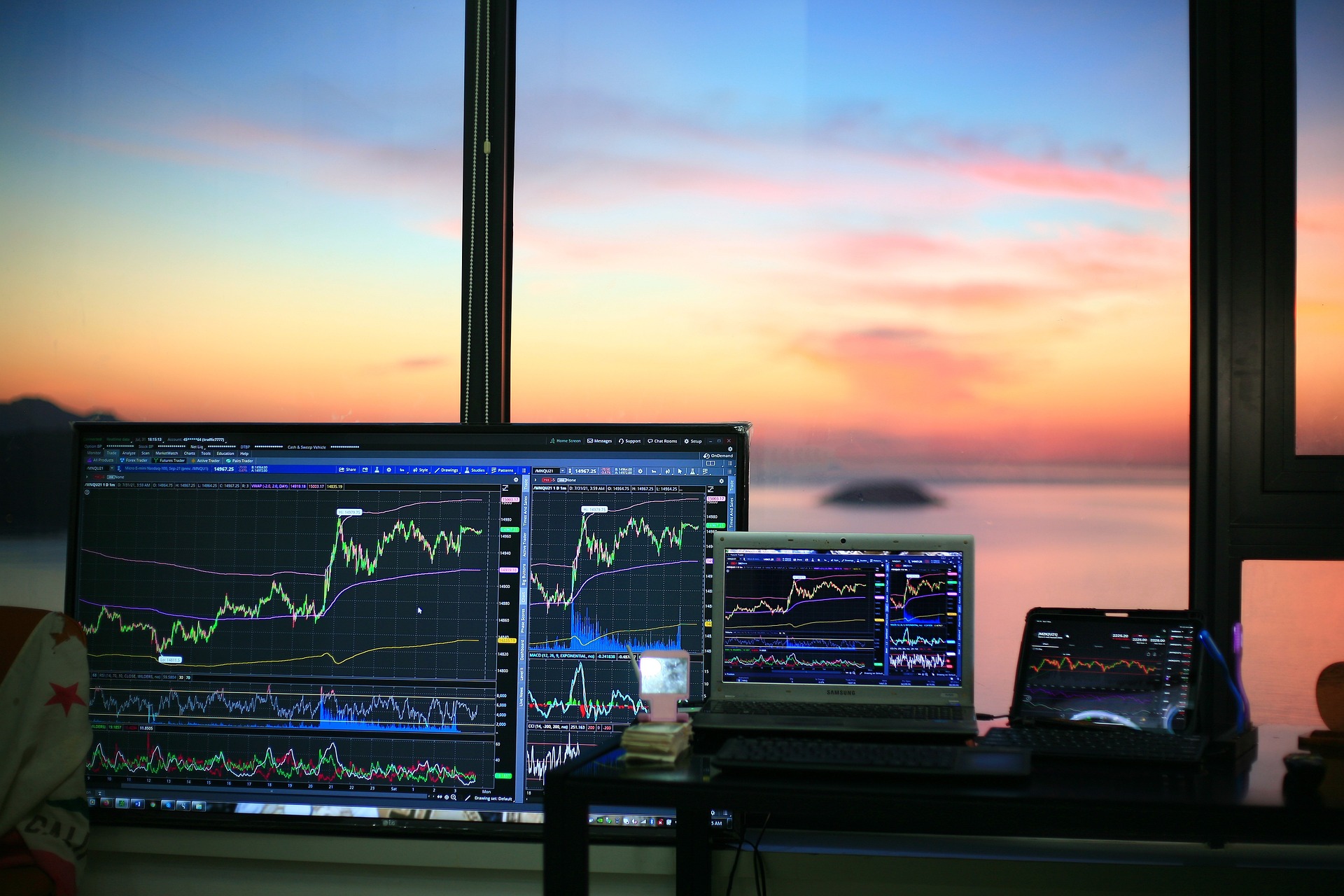The ever-evolving landscape of technology is continuously reshaping the forex market, transforming it from a domain accessible only to seasoned professionals into a more open and accessible environment. This article explores the myriad ways technology has impacted forex trading, from the rise of automated trading platforms and algorithmic trading to the proliferation of mobile apps and advanced charting tools. By understanding the technological landscape, you can leverage these advancements to enhance your trading experience, optimize your strategies, and navigate the market with an informed and future-oriented approach.
Automation in Forex Trading
Automation in Forex trading has transformed the way transactions are executed in the currency market. With the advent of automated trading systems and algorithmic trading, traders can now rely on computer programs to enter and exit trades based on predefined conditions. This automation not only increases the speed of trade execution but also eliminates the emotional aspect often associated with manual trading.
Moreover, automated trading allows for round-the-clock trading without the need for constant monitoring. Traders can set up their systems to execute trades even while they are asleep or away from their computers, ensuring that they never miss out on trading opportunities. This level of automation has significantly improved efficiency and has made Forex trading more accessible to a wider range of investors.
Access to Real-Time Data
Access to real-time data is crucial for success in Forex trading. Technology has revolutionized the way traders access and analyze market information. Here are some key ways in which technology has enhanced access to real-time data:
- Market Analysis Tools:
-
- Advanced charting software provides traders with real-time data visualizations, allowing them to analyze price movements, identify trends, and make informed trading decisions.
- Technical indicators, such as moving averages, MACD, and RSI, help traders assess market sentiment and predict future price movements.
- Backtesting capabilities allow traders to test their trading strategies using historical data, helping them refine their approach and improve their trading performance.
- News Feeds and Economic Calendars:
-
- Real-time news feeds deliver up-to-the-minute updates on economic indicators, geopolitical events, and central bank announcements that can impact currency prices.
- Economic calendars provide traders with a schedule of upcoming economic events and data releases, allowing them to anticipate market volatility and adjust their trading strategies accordingly.
- Integration of news feeds and economic calendars into trading platforms ensures that traders have access to timely information without the need to switch between different sources.
By leveraging these tools and resources, traders can stay informed about market developments and make well-informed trading decisions in real-time, enhancing their chances of success in the Forex market.
Enhanced Trading Platforms
Enhanced trading platforms have become indispensable tools for Forex traders, providing them with advanced features and functionalities to streamline their trading experience. Here are two key aspects of enhanced trading platforms:
Mobile Trading Apps:
- Mobile trading apps offer traders the flexibility to access their accounts and trade on-the-go using smartphones and tablets.
- These apps provide full-featured trading capabilities, including real-time market data, charting tools, and order management functionalities.
- Push notifications keep traders informed about market movements and important events, allowing them to react quickly to changes in market conditions.
- Mobile trading apps are compatible with both iOS and Android devices, ensuring accessibility for traders regardless of their preferred operating system.
User-Friendly Interfaces:
- Enhanced trading platforms feature intuitive and user-friendly interfaces designed to cater to traders of all skill levels.
- Customizable dashboards allow traders to personalize their trading environment according to their preferences and trading style.
- Integrated tools and resources, such as educational materials, market analysis, and trading signals, are easily accessible from within the platform.
- Seamless navigation and responsive design ensure a smooth and efficient trading experience, enabling traders to focus on their trading strategies without being hindered by technical complexities.
By incorporating these features into their trading platforms, brokers empower traders with the tools and resources they need to navigate the Forex market with confidence and efficiency.
Risk Management Tools
| Risk Management Tool | Description | Benefits |
| Stop-Loss Orders | Automatically close a trade at a predetermined price level to limit potential losses. | Minimizes downside risk and protects capital. |
| Take-Profit Orders | Automatically close a trade at a specified price level to secure profits. | Locks in gains and helps traders adhere to their profit targets. |
Risk management is a crucial aspect of Forex trading, and technology has introduced various tools to help traders mitigate potential risks effectively. Here are some key risk management tools:
- Stop-Loss Orders:
-
- Stop-loss orders automatically close a trade when the price reaches a predetermined level, helping traders limit potential losses.
- By setting stop-loss orders, traders can define their maximum acceptable loss on a trade, reducing the impact of adverse price movements.
- Take-Profit Orders:
-
- Take-profit orders allow traders to automatically close a trade when the price reaches a specified level, locking in profits.
- By setting take-profit orders, traders can ensure that they exit trades at predefined profit levels, preventing greed-driven decisions and helping them achieve their trading objectives.
These risk management tools empower traders to manage their risk exposure effectively and protect their trading capital in volatile market conditions.
Impact of Artificial Intelligence
The impact of artificial intelligence (AI) on Forex trading has been profound. AI algorithms analyze vast amounts of data with speed and accuracy, enabling traders to make data-driven decisions. These algorithms can identify patterns and trends in the market that may be imperceptible to human traders, allowing for more precise forecasting and trading strategies.
Moreover, AI-powered predictive analytics can assess market sentiment and predict future price movements with a high degree of accuracy. This foresight enables traders to anticipate market shifts and adjust their trading strategies accordingly, giving them a competitive edge in the Forex market. As AI technology continues to advance, its impact on Forex trading is expected to grow, revolutionizing the way traders operate in this dynamic market.
Global Connectivity and Communication
Global connectivity and communication play a vital role in Forex trading, enabling traders to stay connected with the global marketplace and interact with other traders worldwide. Here are four key aspects of global connectivity and communication in Forex trading:
- Online Trading Communities:
-
- Online trading communities provide traders with platforms to connect, share insights, and discuss trading strategies with fellow traders from around the world.
- These communities foster collaboration and knowledge sharing, allowing traders to learn from each other’s experiences and stay updated on market developments.
- Social Trading Platforms:
-
- Social trading platforms enable traders to follow and replicate the trades of experienced traders, known as “signal providers,” automatically.
- By leveraging social trading platforms, traders can benefit from the expertise of others and diversify their trading portfolios without extensive market knowledge.
- Instant Messaging and Chat Apps:
-
- Instant messaging and chat apps facilitate real-time communication between traders, brokers, and financial institutions, enabling swift decision-making and execution.
- These communication channels allow traders to receive updates on market events, discuss trading ideas, and seek assistance from customer support representatives promptly.
- Multilingual Support Services:
-
- Multilingual support services offered by brokers and trading platforms cater to traders from diverse linguistic backgrounds, ensuring seamless communication and support.
- By providing support in multiple languages, brokers enhance accessibility and foster trust among traders worldwide, regardless of their native language.
Global connectivity and communication platforms empower traders to collaborate, share information, and access support services efficiently, contributing to a more connected and informed Forex trading community.

